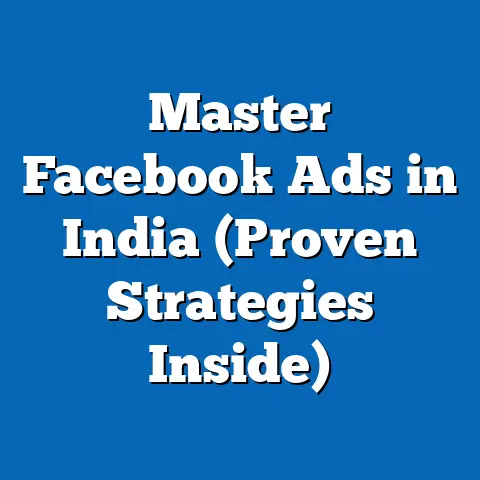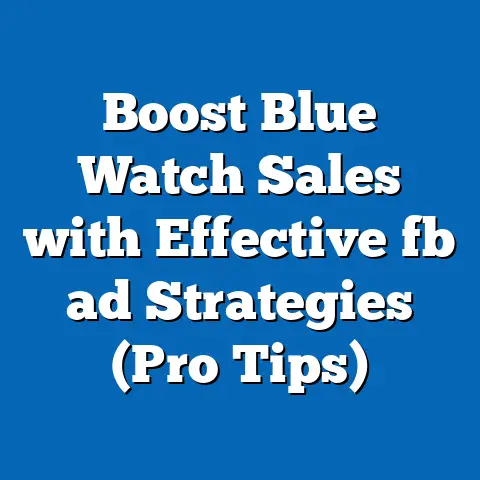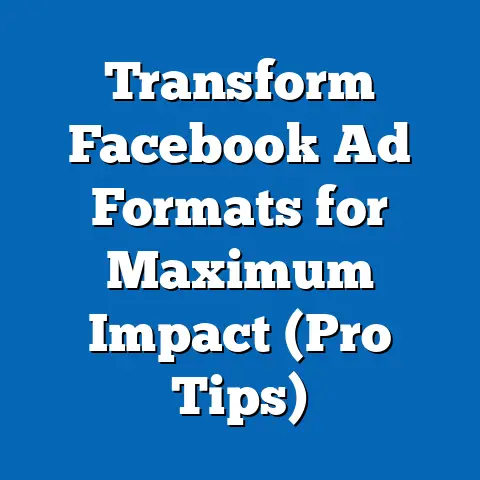Unlocking Facebook Ads Costs in the Philippines (Smart Insights)
Imagine a bustling marketplace in Metro Manila, where vendors once shouted their offers to passersby, now transformed into a digital landscape where businesses vie for attention with a single click. This is the reality of advertising in the Philippines today, where platforms like Facebook have become the new town square for brands to connect with consumers. With over 76 million active Facebook users in the country as of 2023—representing roughly 70% of the population—the platform has cemented itself as a cornerstone of digital marketing strategies, according to data from Statista and We Are Social’s Digital 2023 Report.
The Philippines stands out as one of the most socially engaged nations globally, with Filipinos spending an average of 4 hours and 6 minutes daily on social media, far exceeding the global average of 2 hours and 31 minutes. This hyper-connectivity has fueled a surge in digital advertising, with Facebook Ads emerging as a cost-effective yet powerful tool for businesses of all sizes. But what does it cost to advertise on this platform in the Philippines, and how do these costs compare to global benchmarks or historical trends?
Key Findings: A Snapshot of Facebook Ads Costs in the Philippines
Before delving into the granular details, let’s highlight the core trends shaping Facebook Ads costs in the Philippines as of 2023. According to recent data from AdEspresso and Statista, the average cost-per-click (CPC) for Facebook Ads in the Philippines ranges between $0.15 and $0.30 USD, significantly lower than the global average of $0.97 USD. This affordability positions the country as an attractive market for advertisers seeking high engagement at a lower cost.
The cost-per-thousand-impressions (CPM) also reflects this trend, averaging between $1.50 and $3.00 USD in the Philippines, compared to a global average of $7.19 USD. However, costs vary widely based on demographics, with urban audiences in Metro Manila commanding higher rates (up to 30% more than rural areas) due to greater competition and purchasing power. Seasonality plays a role too, with ad costs spiking by 20-25% during peak periods like Christmas and back-to-school seasons, as reported by eMarketer.
These figures underscore the Philippines’ unique position in the digital advertising ecosystem: a market with high user engagement, relatively low costs, and significant growth potential. But to truly unlock the value of Facebook Ads here, marketers must understand the underlying drivers of these costs, from demographic nuances to historical patterns.
Detailed Analysis: Breaking Down Facebook Ads Costs
1. Cost Structures and Metrics: CPC, CPM, and Beyond
At the heart of Facebook Ads pricing are two primary metrics: Cost-Per-Click (CPC) and Cost-Per-Thousand-Impressions (CPM). CPC measures the price advertisers pay each time a user clicks on their ad, while CPM reflects the cost of 1,000 ad impressions, regardless of clicks. In the Philippines, the average CPC of $0.15-$0.30 USD is notably lower than in Western markets like the United States ($1.86 USD) or Australia ($1.48 USD), based on AdEspresso’s 2023 benchmarks.
This affordability stems from several factors, including lower competition in certain niches and the country’s emerging market status, where advertising budgets are often constrained. However, CPM rates ($1.50-$3.00 USD) can fluctuate based on ad placement—video ads and Stories typically cost 15-20% more than static News Feed ads due to higher engagement rates. Marketers must also consider cost-per-action (CPA), which tracks specific outcomes like purchases or sign-ups, averaging $5-$10 USD in the Philippines for e-commerce campaigns, per eMarketer data.
Understanding these metrics is crucial for budget allocation. For instance, a small business targeting a broad audience might prioritize CPM for brand awareness, while an e-commerce brand could focus on CPC or CPA to drive conversions. These choices directly impact overall ad spend and effectiveness in the Philippine market.
2. Demographic Influences: Who Are You Targeting?
Demographics play a pivotal role in determining Facebook Ads costs in the Philippines, as audience characteristics influence competition and engagement levels. According to Statista, 52% of Filipino Facebook users are aged 18-34, making this demographic the most sought-after by advertisers. Ads targeting this group often see CPCs 10-15% higher than those targeting older users (35+), due to fiercer competition from brands in fashion, tech, and entertainment sectors.
Gender also affects costs, with ads targeting women averaging a 5-8% higher CPC than those targeting men, driven by industries like beauty and lifestyle that heavily target female audiences. Geographically, urban centers like Metro Manila, Cebu, and Davao exhibit CPMs up to 30% higher than rural areas, reflecting greater internet penetration (over 80% in urban areas vs. 50% in rural, per We Are Social) and higher disposable income.
Language targeting adds another layer of complexity. While Filipino (Tagalog) and English are widely used, ads in English often yield higher engagement in urban areas, increasing costs by 10-12% compared to localized dialects. Marketers must weigh these demographic variables to optimize their campaigns, balancing cost with reach and relevance.
3. Industry Competition: Which Sectors Pay More?
The cost of Facebook Ads in the Philippines also varies by industry, reflecting differing levels of competition and audience intent. E-commerce, one of the fastest-growing sectors, sees average CPCs of $0.25-$0.40 USD due to high demand for online shoppers, as reported by Hootsuite. In contrast, industries like education and non-profits often enjoy lower CPCs ($0.10-$0.20 USD) due to less saturated markets.
The food and beverage sector, particularly fast-moving consumer goods (FMCG), experiences seasonal spikes, with CPMs rising by 25% during holiday periods as brands compete for visibility. Meanwhile, financial services and real estate ads command higher CPAs ($8-$15 USD) due to the high value of conversions like loan applications or property inquiries. These industry-specific trends highlight the importance of benchmarking costs against competitors and aligning ad strategies with market dynamics.
Statistical Comparisons: How Costs Differ Across Demographics
To illustrate the demographic impact on Facebook Ads costs, let’s compare key metrics across age groups, genders, and locations using 2023 data from AdEspresso and Statista. For age groups, the 18-24 cohort has the highest average CPC at $0.28 USD, followed by 25-34 at $0.25 USD, and 35-44 at $0.20 USD. This trend reflects the higher digital engagement and brand affinity among younger users, making them a premium target.
Gender-based data shows women’s CPC at $0.26 USD compared to men’s $0.22 USD, a disparity driven by targeted industries like cosmetics and apparel. Geographically, Metro Manila’s CPC averages $0.30 USD, while rural regions like Northern Mindanao hover at $0.18 USD, underscoring urban-rural divides in purchasing power and ad competition.
These comparisons reveal stark differences in cost structures across demographics, emphasizing the need for precise audience segmentation. A visual representation, such as a bar chart comparing CPC across age groups and regions, would further clarify these disparities for marketers planning campaigns. For now, these numbers serve as a starting point for understanding cost variations and tailoring strategies accordingly.
Historical Trend Analysis: How Costs Have Evolved
Looking back over the past five years, Facebook Ads costs in the Philippines have undergone significant changes, reflecting broader shifts in digital adoption and economic conditions. In 2018, the average CPC was just $0.08-$0.12 USD, nearly 50% lower than today’s $0.15-$0.30 USD, according to historical data from WordStream and eMarketer. This rise correlates with a 35% increase in Facebook users in the country (from 56 million in 2018 to 76 million in 2023), driving up competition for ad space.
CPM rates have followed a similar trajectory, climbing from $0.80-$1.50 USD in 2018 to $1.50-$3.00 USD in 2023. Key drivers include the rapid growth of e-commerce (up 25% annually since 2019, per Statista) and the influx of small-to-medium enterprises (SMEs) adopting digital marketing post-COVID-19. The pandemic itself accelerated cost increases, with a 15% spike in CPC during 2020 as businesses pivoted to online channels amid lockdowns.
Economic factors, such as inflation and currency fluctuations, have also played a role. The Philippine peso’s depreciation against the USD (from PHP 50 in 2018 to PHP 56 in 2023) has made ad costs appear higher in local terms, even as global benchmarks remain stable. Comparing these historical trends to current data highlights the maturing digital ad market in the Philippines, where costs are rising but still offer value relative to developed markets.
Seasonal events like Christmas, when consumer spending peaks (up 20% year-over-year, per local reports), push ad costs higher due to increased demand. Regulatory factors, such as data privacy laws under the Data Privacy Act of 2012, impose stricter targeting rules, potentially raising costs by 5-10% as advertisers adapt to limited data access. Additionally, global platform updates, like Apple’s iOS 14 privacy changes in 2021, have reduced tracking accuracy, impacting ad efficiency and indirectly inflating CPAs.
Economic conditions, including a projected GDP growth of 6% in 2023 (per the Asian Development Bank), suggest rising consumer confidence and ad budgets, which could further drive costs. These contextual elements underscore the multifaceted nature of ad pricing, requiring marketers to stay agile amid evolving conditions.
Future Projections: What Lies Ahead for Facebook Ads Costs?
Looking forward, several indicators point to continued growth in Facebook Ads costs in the Philippines, though at a moderated pace. eMarketer forecasts a 10-15% annual increase in CPC and CPM through 2025, driven by rising internet penetration (projected to reach 80% by 2025) and growing SME adoption of digital marketing. The expansion of 5G networks could further boost mobile ad engagement, potentially raising costs by 5-8% as video and interactive formats gain traction.
Demographic shifts, such as the aging of the Gen Z cohort into higher purchasing power brackets, may intensify competition for the 18-34 age group, pushing CPCs closer to $0.35-$0.40 USD by 2025. However, innovations in ad tech, like AI-driven targeting from Meta, could improve efficiency and partially offset cost increases by enhancing ROI. Seasonal trends are expected to persist, with holiday spikes becoming more pronounced as e-commerce grows.
On a broader scale, the Philippines’ digital ad market is projected to reach $1.2 billion by 2025, with social media ads (primarily Facebook) accounting for 40% of this spend, per Statista. This growth signals both opportunity and challenge: higher costs but also greater potential for reach and impact. Marketers should prepare for a landscape where strategic planning and data-driven optimization will be key to managing rising expenses.
Conclusion: Navigating the Future of Facebook Ads in the Philippines
Facebook Ads in the Philippines offer a compelling mix of affordability, high engagement, and growth potential, with current CPCs ($0.15-$0.30 USD) and CPMs ($1.50-$3.00 USD) well below global averages. Yet, as this analysis has shown, costs are shaped by a complex interplay of demographics, industry competition, historical trends, and contextual factors like internet penetration and seasonality. From the higher CPCs for younger urban audiences to the seasonal spikes during holidays, understanding these nuances is critical for effective campaign planning.
Historically, costs have risen steadily since 2018, reflecting the country’s digital transformation and post-pandemic advertising boom. Looking ahead, projections suggest continued increases through 2025, tempered by technological advancements and market maturation. For businesses, the implication is clear: now is the time to invest in smart, data-driven strategies to maximize ROI before costs align more closely with global benchmarks.
Whether you’re a local SME or a multinational brand, unlocking the potential of Facebook Ads in the Philippines requires a deep dive into these trends and a willingness to adapt. By leveraging the insights and data presented here, marketers can navigate this evolving landscape with confidence, turning clicks into connections in one of the world’s most socially engaged markets.






